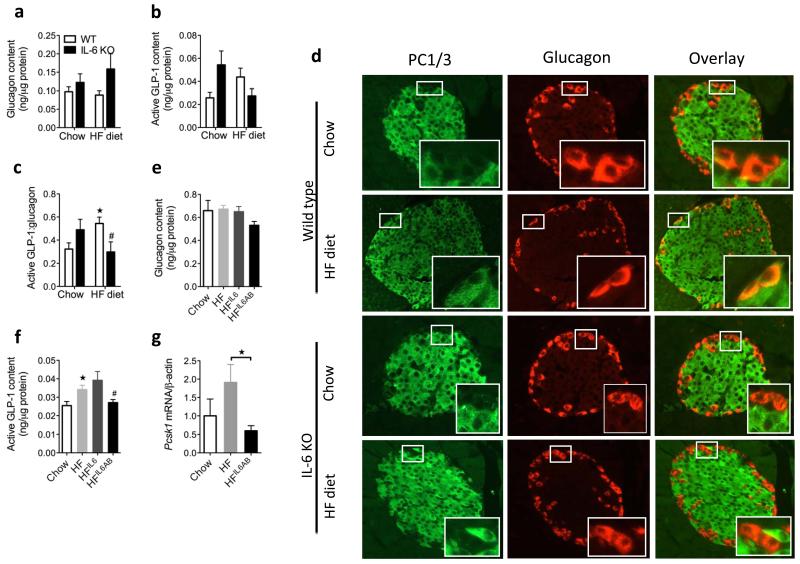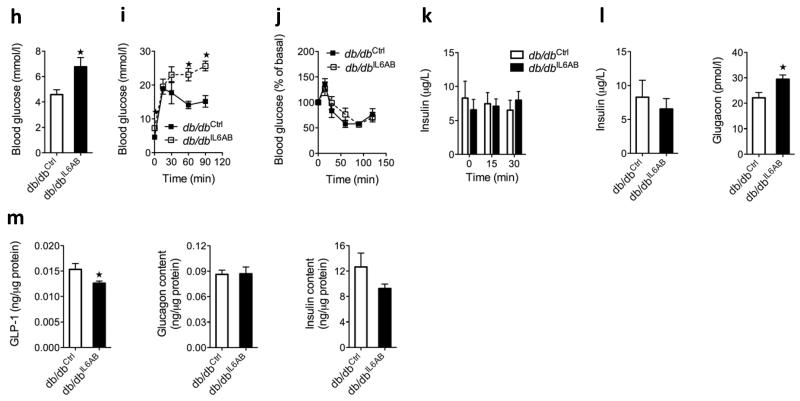Figure 6.
Effect of IL-6 antagonism in mice fed a high-fat diet and in db/db mice. (a) Pancreatic glucagon (left), GLP-1 (middle) and GLP-1:glucagon content as a molar ratio (right) in male WT and IL-6 knockout (KO) mice after 18 weeks of chow or high-fat diet (HF) (n = 8). (b) Immunohistochemistry of pancreatic tissue sections using antibodies against PC1, PC3 and glucagon (representative image of n = 5) (c) Pancreatic glucagon (left) and GLP-1 (right) in male mice fed chow or a high-fat diet for 15 weeks (n = 7–8). Mice on a high-fat diet and injected with IL-6 (HF IL-6inj) received IL-6 twice daily for the last 7 days of the study, and mice fed on a high-fat diet and injected with an antibody to IL-6 (HF IL-6AB) received an antibody that neutralized IL-6 for the last 4 weeks of the study. (d) Pcsk1 mRNA in FACS-sorted alpha cells from male mice expressing a yellow fluorescent protein under the control of the glucagon promoter after 20 weeks on chow or a high-fat diet (n = 5–8). Blood glucose (e), ipGTT (left), ITT (middle) and plasma insulin (right) (f) in response to intraperitoneal glucose in male db/db mice after 4 weeks without (db/db ctrl) or with (db/db IL-6AB) treatment with antibodies to IL-6 (n = 4–5). (g) Fasting plasma hormones in male db/db mice with or without treatment with antibodies to IL-6 (n = 4–5). (h) Pancreatic hormone content in male db/db mice with or without treatment with antibodies to IL-6 (n = 4–5). Data represent means ± s.e.m. *,#P < 0.05, determined by ANOVA, where the asterisk compares chow to a high-fat diet, and # compares genotypes on a high-fat diet only (a) or high-fat diet to a high-fat diet plus antibodies to IL-6 (c). In e–h, *P < 0.05, determined by Student’s t test comparing control mice to mice injected with antibodies to IL-6.


